China astronauts return from Tiangong space station
Monday, 05 December 2022 10:43 Three Chinese astronauts safely returned to Earth on Sunday after six months aboard the Tiangong space station, state media quoted the country's space agency as saying, with their mission deemed a "complete success."
The team, which had been aboard the station since early June, touched down at the Dongfeng landing site in Inner Mongolia at 8:09 pm Beijing time (1209 GMT), Xinhua news agency
Three Chinese astronauts safely returned to Earth on Sunday after six months aboard the Tiangong space station, state media quoted the country's space agency as saying, with their mission deemed a "complete success."
The team, which had been aboard the station since early June, touched down at the Dongfeng landing site in Inner Mongolia at 8:09 pm Beijing time (1209 GMT), Xinhua news agency Space Force's Wide Field of View achieves First Light
Monday, 05 December 2022 10:43 The United States Space Force Space Systems Command's Wide Field of View Testbed transmitted its "First Light" mission data-product. Performing the satellite's mission operations, Millennium Space Systems, a Boeing (NYSE: BA) company, secured the data beginning October 25.
"Achieving this major milestone is a huge accomplishment, and we are very excited to enter into the calibration phase
The United States Space Force Space Systems Command's Wide Field of View Testbed transmitted its "First Light" mission data-product. Performing the satellite's mission operations, Millennium Space Systems, a Boeing (NYSE: BA) company, secured the data beginning October 25.
"Achieving this major milestone is a huge accomplishment, and we are very excited to enter into the calibration phase Mars set to wink out behind the Moon
Monday, 05 December 2022 10:43 On the night of December 7-8, Mars will be at opposition - opposite the Sun's position in the sky. On that date, Earth is situated directly between Mars and the Sun. The planet is at its brightest, rising as the Sun sets and setting as the Sun rises. Opposition and closest approach to Earth, however, are offset by several days due to the relative shape and orientation of each planet's orbit. Mar
On the night of December 7-8, Mars will be at opposition - opposite the Sun's position in the sky. On that date, Earth is situated directly between Mars and the Sun. The planet is at its brightest, rising as the Sun sets and setting as the Sun rises. Opposition and closest approach to Earth, however, are offset by several days due to the relative shape and orientation of each planet's orbit. Mar The 2022 Geminids meteor shower is approaching
Monday, 05 December 2022 10:43 The cosmos' annual gift to sky watchers, the Geminids Meteor shower, will peak on Dec. 13-14 this year.
During peak activity and perfect weather conditions, which are rare, the Geminids produce approximately 100-150 meteors per hour for viewing. However, this year a wanning gibbous moon will make it harder to view most of the shower, resulting in only 30-40 visible meteors per hour at the
The cosmos' annual gift to sky watchers, the Geminids Meteor shower, will peak on Dec. 13-14 this year.
During peak activity and perfect weather conditions, which are rare, the Geminids produce approximately 100-150 meteors per hour for viewing. However, this year a wanning gibbous moon will make it harder to view most of the shower, resulting in only 30-40 visible meteors per hour at the Flying an interstellar telescope
Monday, 05 December 2022 10:43 Today, he is among the millions of space enthusiasts enjoying the exquisite photography from that instrument that NASA is publishing to give academics as well as armchair astronomers a look back billions of years into the history of the universe.
"It's a little bit of wonder, a little bit of amazement and in some ways, a deep sense of humility having a small role in it," said Peralta, a Ra
Today, he is among the millions of space enthusiasts enjoying the exquisite photography from that instrument that NASA is publishing to give academics as well as armchair astronomers a look back billions of years into the history of the universe.
"It's a little bit of wonder, a little bit of amazement and in some ways, a deep sense of humility having a small role in it," said Peralta, a Ra Researchers observe directly turbulent magnetic reconnection in solar wind
Monday, 05 December 2022 10:43 Researchers from the University of Science and Technology of China (USTC) of the Chinese Academy of Sciences, under the direction of Prof. WANG Rongsheng and Prof. LU Quanming, used data from the Magnetospheric Multiscale (MMS) mission to directly observe bursty and turbulent magnetic reconnection in the solar wind. Their findings were published in Nature Astronomy.
Magnetic reconnection i
Researchers from the University of Science and Technology of China (USTC) of the Chinese Academy of Sciences, under the direction of Prof. WANG Rongsheng and Prof. LU Quanming, used data from the Magnetospheric Multiscale (MMS) mission to directly observe bursty and turbulent magnetic reconnection in the solar wind. Their findings were published in Nature Astronomy.
Magnetic reconnection i Sidus Space receives NOAA Tier 1 License
Monday, 05 December 2022 10:43 Sidus Space, Inc. (NASDAQ:SIDU), a Space-as-a-Service company focused on mission critical hardware manufacturing combined with commercial satellite design, manufacture, launch, and data collection, has secured U.S. regulatory approval to provide global data services from its upcoming LizzieSat-1 mission through a Tier 1 license granted by the National Oceanographic and Atmospheric Administration
Sidus Space, Inc. (NASDAQ:SIDU), a Space-as-a-Service company focused on mission critical hardware manufacturing combined with commercial satellite design, manufacture, launch, and data collection, has secured U.S. regulatory approval to provide global data services from its upcoming LizzieSat-1 mission through a Tier 1 license granted by the National Oceanographic and Atmospheric Administration Dabeeo partners with Maxar to expand the global satellite data analysis market
Monday, 05 December 2022 10:43 Dabeeo, a geospatial information technology company based on AI (CEO: Ju-hum Park), has announced a partnership with Maxar Technology ("Maxar" hereinafter), a leading space technology and intelligence company. This partnership enables Dabeeo to expand its domestic and international earth observation service business.
The satellite data analysis market is expanding rapidly in line with the
Dabeeo, a geospatial information technology company based on AI (CEO: Ju-hum Park), has announced a partnership with Maxar Technology ("Maxar" hereinafter), a leading space technology and intelligence company. This partnership enables Dabeeo to expand its domestic and international earth observation service business.
The satellite data analysis market is expanding rapidly in line with the Chris Pearson takes the reins at Agile Space Industries
Monday, 05 December 2022 09:00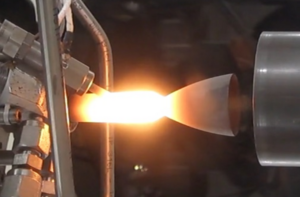
Chris Pearson, former Roccor CEO and Redwire executive vice president, is the new CEO of Durango, Colorado-based propulsion startup Agile Space Industries.
The post Chris Pearson takes the reins at Agile Space Industries appeared first on SpaceNews.
Three Chinese astronauts return to Earth after 6-month mission
Monday, 05 December 2022 07:47
Australia starts building 'momentous' radio telescope
Monday, 05 December 2022 07:45
Australia on Monday started building a vast network of antennas in the Outback, its section of what planners say will eventually become one of the most powerful radio telescopes in the world.
When complete, the antennas in Australia and a network of dishes in South Africa will form the Square Kilometer Array (SKA), a massive instrument that will aim to untangle mysteries about the creation of stars, galaxies and extraterrestrial life.
The idea for the telescope was first conceived in the early 1990s, but the project was plagued by delays, funding issues and diplomatic jockeying.
U.S. Space Force chief: The use of space technology in Ukraine ‘is what we can expect in the future’
Sunday, 04 December 2022 15:41
The war in Ukraine has put on display military forces’ growing reliance on satellites and has created incentives to disrupt opponents’ access to space systems, said Gen. B. Chance Saltzman, chief of space operations of the U.S.
SpaceX rolls out new business line focused on military satellite services
Saturday, 03 December 2022 14:25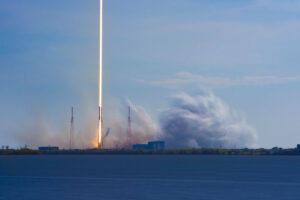
SpaceX on Dec. 2 revealed a new business segment called Starshield aimed at U.S. national security government agencies.
The post SpaceX rolls out new business line focused on military satellite services appeared first on SpaceNews.
Space Force establishes component at U.S. Central Command
Friday, 02 December 2022 21:09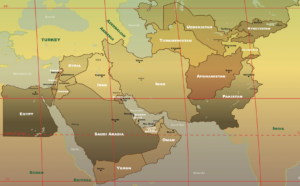
U.S. Central Command on Dec. 2 activated a Space Force component known as U.S. Space Forces-Central
The post Space Force establishes component at U.S. Central Command appeared first on SpaceNews.
The world finally has its first 'parastronaut'. Can we expect anyone to be able to go to space one day?
Friday, 02 December 2022 15:48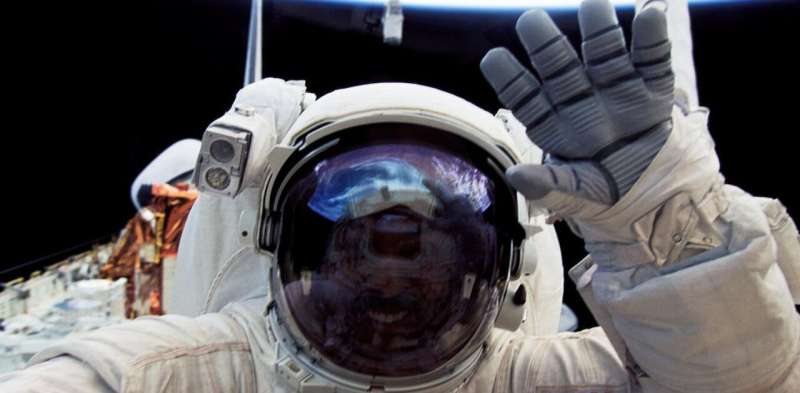
The European Space Agency made history last week with the announcement of the first "parastronaut," 41-year-old UK citizen John McFall.
He is the first candidate selected for the Parastronaut Feasibility project, described by ESA as a "serious, dedicated and honest attempt to clear the path to space for a professional astronaut with a physical disability."
McFall, a former Paralympic sprinter, had his right leg amputated after a motorcycle accident at age 19.
Most of us are familiar with images of grueling astronaut selection tests and training from movies such as The Right Stuff. ESA seeks to answer the practical question of what changes to training and equipment need to be made for a physically disabled person to travel to space.
How are astronauts selected?
NASA first selected astronauts, the Mercury Seven, in 1959.

